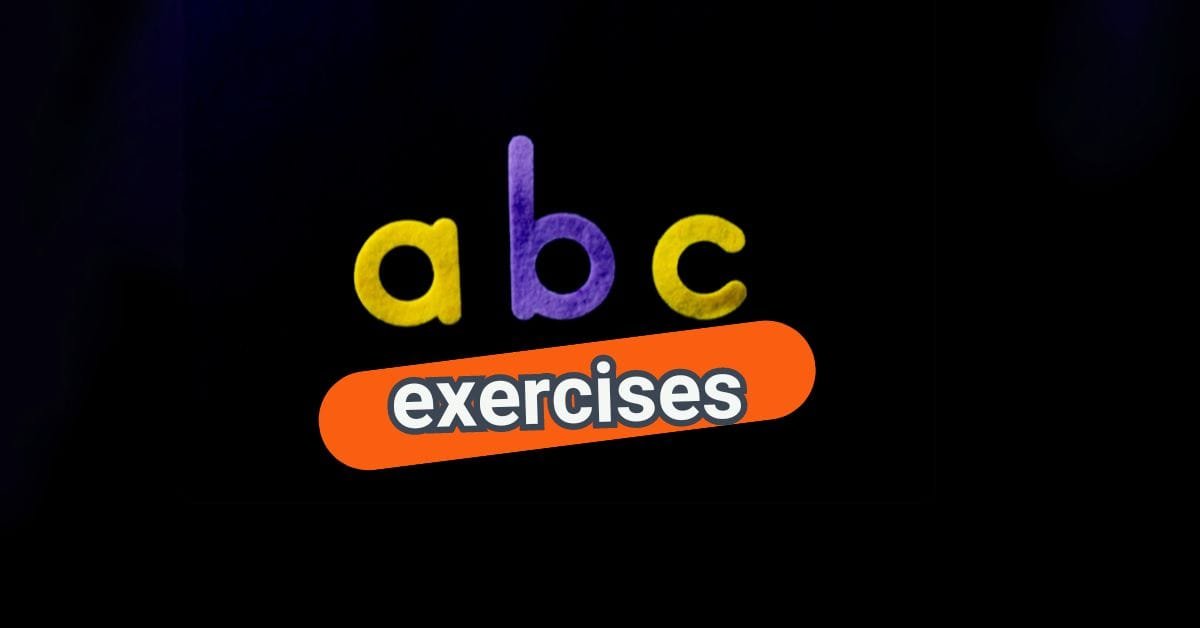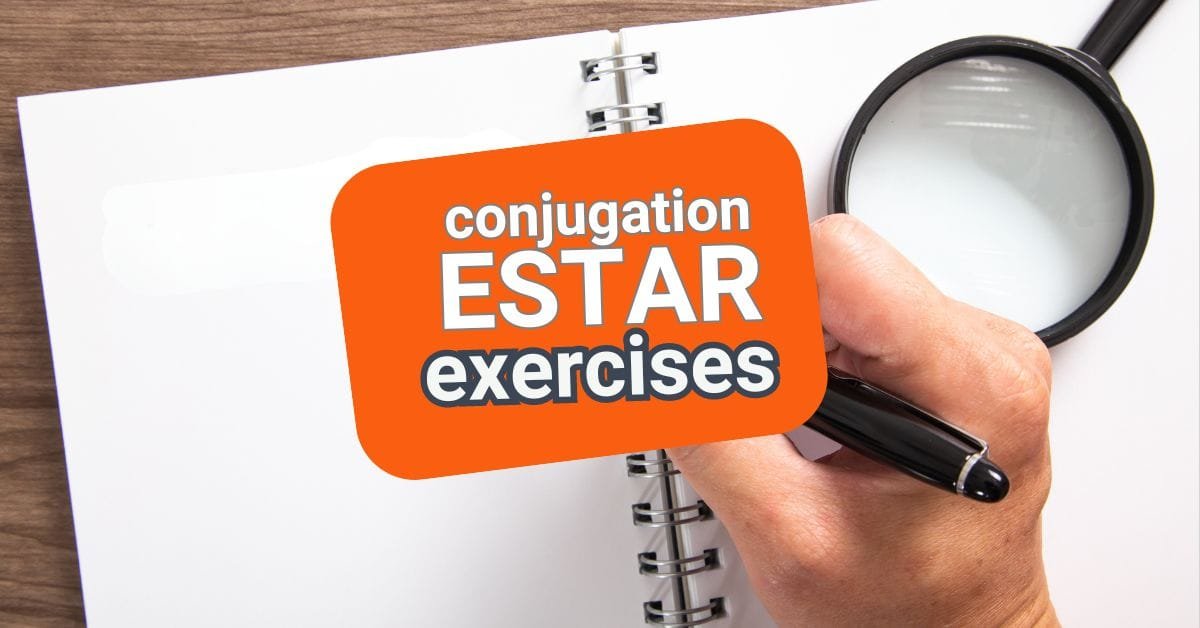Welcome to this Spanish verb conjugation practice. In this opportunity we are going to focus on present tense of the verb “estar”. This verb means “to be” and is widely used in everyday Spanish conversation. If you’re learning Spanish, mastering “estar” is a key step in building fluency.
In this activity, you’ll review the present indicative forms of “estar”. Also, you’ll test your understanding through practical activities. We want to put your knowledge into practice through interactive exercises and videos.
With this exercise, we aim you to gain a deeper understanding of how this verb works, and why it’s so important for expressing emotions, locations, and temporary conditions in Spanish.
Why Practice the Verb “Estar” in Present Tense?
The verb estar translates to “to be” in English. However, Spanish has two verbs that mean “to be”. They are “ser” and “estar”. Each one is used in different contexts, and knowing when and how to use them correctly is crucial for speaking Spanish naturally and accurately.
So, when do we use “estar”? In general, “estar” is used to express:
- Temporary states or conditions: Estoy cansado. (I am tired.)
- Emotions or feelings: ¿Estás triste? (Are you sad?) or Estoy feliz. (I am happy.)
- Location: El libro está en la mesa. (The book is on the table.) or ¿Dónde estás? (Where are you?)
- Ongoing actions (with the present continuous tense – ing): Estamos estudiando. (We are studying.) or Ellos están celebrando. (They are celebrating.)
Mastering “estar” conjugation will boost your daily conversation skills. Understanding the present tense forms of “estar” will help you talk about how you feel (emotions), where you are (locations), and what you’re doing (ongoing actions and temporary states).
Learning how to use it accurately helps build a solid foundation in Spanish grammar.
Present Tense Conjugation of Estar
Before you begin the exercises, take a moment to review the present indicative forms of estar:
| Subject | Conjugation |
| Yo | estoy |
| Tú | estás |
| Él / Ella / Usted | está |
| Nosotros / Nosotras | estamos |
| Vosotros / Vosotras | estáis (used in Spain) |
| Ellos / Ellas / Ustedes | están |
Let’s look at these forms in example sentences:
- Yo estoy en casa. (I am at home.)
- ¿Tú estás bien? (Are you okay?)
- Ella está ocupada. (She is busy.)
- Nosotros estamos listos. (We are ready.)
- Ellos están en clase. (They are in class.)
Pay attention to the accents in words like estás, está, and están. They change the meaning and are pronounced with different intonations.
Interactive Exercise: Practice What You’ve Learned
Now it’s time to put your knowledge into action.
Below, you’ll find an interactive exercise designed to test your understanding of how estar is used in the present tense. You’ll be asked to conjugate the verb correctly and complete sentences based on real-life contexts.
Try the activity as many times as needed. The more you practice, the more natural it will feel to use estar in your daily conversations.
Tips for Using the Exercise Effectively
Focus on accuracy. Read each sentence carefully.
Say your answers out loud before checking them.
Don’t rush. Repeat the exercise several times to reinforce your learning.
After each attempt, review your mistakes and understand why the correct form is used.
Let’s do it.
Keep practicing is key for your confidence
Check your answers and try the exercise again until you feel confident. Don’t forget to combine this with listening and speaking practice. Next you will find videos for this topic.
Check your answers and continue practicing to perfect your Spanish! 🌟📚💬
Video Practice: Present Tense of Verb “Estar” – Listening and Speaking
Listening and repeating is one of the best ways to learn and reinforce verb conjugations. In the videos below, you’ll hear how native Spanish speakers from Latin America and Spain pronounce the verb estar in the present tense. Both varieties are correct. Choose the one that aligns with your learning goals or practice with both to become familiar with different accents.
Try to listen carefully and repeat it aloud. By doing so, you’ll improve your pronunciation and retention.
Latin American Spanish
This video presents the conjugations of estar spoken with a Latin American accent. It’s perfect for learners focusing on Latin American Spanish. Listen and repeat each conjugation. Feel free to pause and repeat the video as many time as needed.
Spanish from Spain
This second video shows the same conjugations, but with a European Spanish accent. Notice the slight differences in pronunciation, especially with the vosotros form (estáis), which is commonly used in Spain.
Why Consistent Practice Matters
Learning a new verb form isn’t just about memorizing endings. It’s about using the verb in context until it becomes second nature.
Here’s how regular practice helps:
- You build confidence in speaking.
- You develop strong listening skills.
- You reduce hesitation and overthinking during conversation.
- You internalize grammar rules through repetition and usage.
To get the most out of your learning, combine this exercise with:
- Speaking practice with a tutor or language partner
- Listening to Spanish music or podcasts
- Watching Spanish shows with subtitles
- Writing short texts or journal entries using estar
More Learning Resources
Looking to go deeper?
Full Guide on Estar: if you want a detailed explanation of estar and its different uses, check out our complete guide: Estar Conjugation – Learn the Estar Forms in Spanish
Explore More Spanish Verbs: expand your vocabulary by learning the most frequently used verbs in Spanish:Top 20 Spanish Verbs and Their Conjugations
For more lessons, resources and practice materials, browse our full collection of exercises: Visit our Spanish Exercises page
Spanish Learning on YouTube. Watch more videos designed to help you practice verbs, pronunciation, and everyday Spanish: Visit our Spanish Learning Youtube Channel
Final Thoughts
The verb estar is one of the cornerstones of Spanish grammar. Whether you’re describing how you feel, where something is, or what you’re doing right now, estar is the word you’ll need.
By practicing consistently and combining written exercises, listening, and speaking, you’ll gain the confidence to use estar naturally in conversation. Take your time, revisit the videos, and complete the exercise as often as needed.
Your Spanish fluency grows with every step. Please keep going, and don’t forget to enjoy the process.
¡Buena suerte y sigue practicando!

